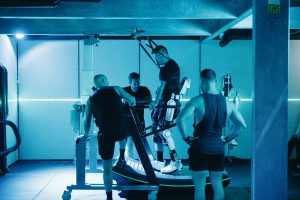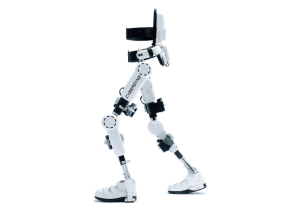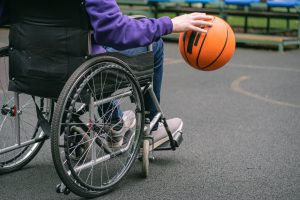It’s been a very eventful year for tappON, and it’s going to get even better. We’re pleased to announce the launch of our sister company: RoboFit.

The Story so Far
If you’re familiar with tappON’s story, you’ll know all about the profound impact a spinal cord injury can have on an individual’s quality of life. This lived experience has lead tappON co-founders Maryanne Harris and Daniel Hillyer on a journey across the world to investigate potential treatments for neurological disorders, eventually leading to her encountering Cyberdyne, the Japanese company developing the innovative Hybrid Assistive Limb (HAL) exoskeleton.
Eight years and three trips to Japan later, and Maryanne and Daniel finally acquired the distribution license and TGA approval to make this cutting edge technology available to Australians.
So, what’s RoboFit?
RoboFit is Australia’s first robot-powered rehabilitation centre, using Cyberdyne’s HAL exoskeleton to deliver the future of rehab to individuals living with neurological conditions such as Stroke Survivors, Multiple Sclerosis, and Spinal Cord Injury. The head RoboFit clinic is located in North Wollongong, New South Wales.
This game-changing HAL training service has allowed RoboFit co-founder Daniel Hillyer to achieve what was previously unthinkable, and we’re super excited to be making this training accessible to Australians.
How does it work?
The Cyberdyne HAL exoskeleton is what we call a ‘neuro-controlled‘ exoskeleton. This might sound daunting, but simply put it means that the exoskeleton is able to pick up on the wearer’s movement intentions, and move with the wearer, rather than for the wearer.
Moving with the exoskeleton can be broken down into 5 key steps:
 Think
Think
- First, try to perform a movement. When this happens, your brain sends signals to the desired muscle group, telling it to act.
- Send
- Receiving the signals, the muscles attempt to move. In a healthy body, this would be where the muscle acts with the intended strength and speed.
- Read
- Using electrodes, HAL reads the bioelectric signals sent by the brain and determines what movement the wearer intends to perform.
- Move
- In accordance with the recognised motions, HAL distributes power to the exoskeleton, providing the wearer with the required assistance to complete the action as normal.
- Feedback
- Performing the motions with HAL stimulates neuroplasticity, developing new neural pathways and improving long term motor function.
This method has proven to be much faster than traditional rehab methods, and has personally changed co-founder Daniel’s life.
RoboFit and tappON
RoboFit is exclusive to tappON. As an introductory offer, we’re providing the first 20 active tappON members to enquire about RoboFit with a free two hour consult at RoboFit HQ in North Wollongong, New South Wales.
If you’re interested in trying out our cutting edge service, get in touch with the team at hello@robofit.com.au and we’ll get the ball rolling.
The Future of Rehab is Here.



